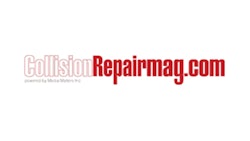
By Gideon Scanlon
For decades, Canadian collision repairers have seen industry conference events as a working holiday, giving them the chance to take a break from the daily grind by discussing the industry with their peers in suburban conference centres. It is a tradition that dates back to the 1920s, during the sector’s second decade of significance.
It is also one that has come to a screeching halt. What remains to be seen is if the halt is a permanent one.
Since March, with public events canceled, several industry conferences have moved online. Most notably, the International Bodyshop Industry Symposium was, for the first time ever, run over the internet.
The response to the change has been, overall, positive. When this magazine surveyed business owners who regularly attended industry conferences, more than half had already participated in at least one of the online alternatives.
Of those who hadn’t, half indicated that they would like to.
In fact, while three-quarters of those surveyed said they enjoyed the digital experience, most of those who did not appear to be prepared to live with the shift. All of those who had not enjoyed their first digital conferences had participated in at least one more.
The results also indicate something else–a segment of the repair-owning group who will not engage in digital conferences, no matter what. Some 21 percent of the surveyed group said that they had not and would not participate in online forums.
All told, however, the majority of repairers in favour of digital conferences outweighed the number of those against them. In fact, 16 percent of respondents indicated there were conferences they would only attend if they could participate online. So, if these numbers are reflective of the general attitude of the industry, the net difference in total attendance between an online and an in-person event would be just five percent.
Therein lies the rub.
While the constraints of a trade magazine survey mean its results cannot be used to extrapolate broader industry trends with great confidence, they do provide a good starting point for organizations looking to target their own research.
Assuming the organizers of industry conferences do conduct further research and find cross-industry attitudes broadly in line with this magazine’s own findings, they will have a decision to make. Do they return to in-person events at suburban hotels in order to secure the interest of the five percent of intransigent auto repairers, or do they continue to offer online alternatives instead?
Conference organized–who are, it is important to remember, separate entities from the ones collecting hotel booking fees–are unlikely to stick up for the traditional approach.
First of all, the world is broadly dismissive of people who express disinterest in technology-based alternatives. Rightly or wrongly, it is likely they will conclude that the one-in-five repairers who are unwilling to engage with conferencing at all are made-up of older repairers nearing the end of their careers. They will also conclude the opposite about the repairers who express a preference for online conferences over live ones.
Secondly, the expense and organizational manpower required to host in-person events are unlikely to make it worthwhile, even if attendance goes down by five percent.
The true cost of attending conferences is difficult to predict and varies wildly from business to business within the auto repair sector. According to several sources on the Internet, however, a good rule-of-thumb for business in any sector is to budget $1,250-per-employee-per-day.
These costs don’t just reflect the cost of tickets, hotels and meals, but also the cost of lost opportunities and labour hours elsewhere. Attending conferences online, however, would make a much smaller impact on the bottom line. Where IBIS U.S.A. was scheduled to run over two days, its digital replacement was over within a few hours.
If there is one thing that might save the traditional conference, however, it might be the collision industry’s love of networking, which 78 percent of respondents agreed was one of the most important aspects of any conference.
As one reader put it: “You cannot underestimate the power of networking opportunities before and after the day’s meetings. Online is good, in person is best.”
For those who refuse to engage with online conferences, this may be good news, but it is not an ace-up-the-sleeve. While networking online may be more difficult than it once was, it is not impossible.
There are countless examples of this gap being closed. To spare readers a millennial’s full history of social media, I will stick to just one telling example.
Last week, during Elite Bodyshop Solutions Marketing in a Downturn webinar, the live chat function, which allowed readers to engage in a cross-audience conversation, ended up filled with countless comments from more than half of the viewers. In fact, the hosts ended up engaging in a playful back-and-forth with the commenters.
Given that the repairers involved in the messenger-based conversation were, like most of the world, deep into the second month of social isolation, their willingness to engage in online socialization might not come as a shock. It is, however, indicative of the fact that, while many people might favour face-to-face networking, the longer social isolation carries on, the better we will be at doing it online.




















